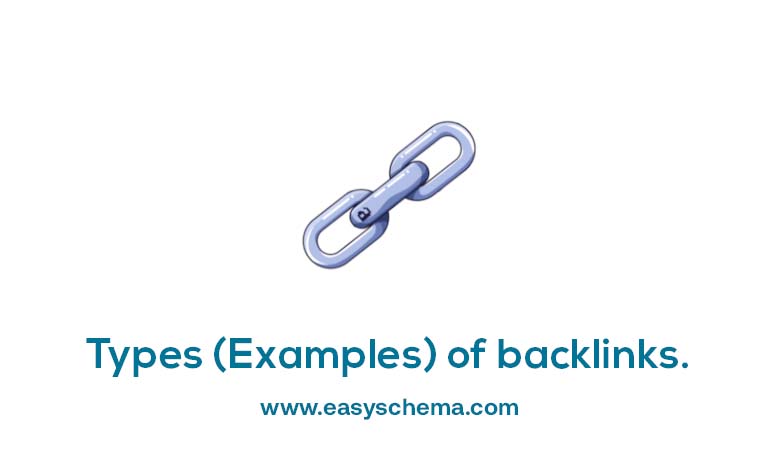A backlink on a website is a link that goes to a page on another site. Backlinks are created when a specific website links to another website somewhere in their content. You can create several types of backlinks for search engine optimization, but only a few of them (high-quality backlinks) will impact your SEO efforts the most.
Here are some examples of backlinks:
1.Dofollow backlinks
Dofollow links can directly help with search engine optimization by passing the PR authority of the origin site to the destination website. On the other hand, backlinks are naturally dofollow links only if the website owners add a nofollow tag.
2.Nofollow backlinks
Nofollow links refer to those backlinks that are tagged in a machine-readable way, so they aren’t able to pass PR authority from the origin site to the destination website. Note: These backlinks have the rel=” nofollow” tag in the HTML code.
3.Contextual backlinks
Contextual backlinks refer to the links embedded within the main content on a particular website that users read (instead of being placed within the header/footer or sidebar).
4.Editorial backlinks
An editorial backlink is an example of a natural link that results from a site owner linking to a page based on the quality of the content. These links are called natural backlinks because they are received naturally by publishing good, relevant content, making other website owners think it would benefit the readers. To sum up, an editorial link is not asked for, traded for, or paid for, which is why it is a natural backlink.
An editorial backlink can also come in the form of quotes, and if this is the case, this is how it is obtained: a journalist will reach out to a specific person and get his opinion on a particular topic. Then, the website will include a backlink to the company they work for or to the expert’s personal homepage.
5.Author backlinks
Regarding author backlinks, we refer to links positioned in the author bio box on a page. These backlinks include hyperlinks to a specific landing web page, social media profiles, or the author’s site homepage.
6.Header backlinks
Header backlinks refer to sitewide backlinks appearing in the site’s top section. Usually, this area is where the main navigation menu is located. Even though header backlinks look like they will link to a web page on the current website, there are outbound hyperlinks that take users to another site.
7.Sidebar backlinks
Sidebar backlinks refer to links positioned in a site’s layout’s sidebar section, left or right. These types of hyperlinks are considered to be a type of sitewide link as they appear on every page.
8.Footer backlinks
Another type of sitewide link is footer backlinks, which are often considered examples of boilerplate links. Many people try to use these types of links for search engine optimization by adding keyword-optimized anchor text to these backlinks to get link equity from the original website.
9.Image backlinks
Image backlinks refer to links to your site from photos and graphics that include hyperlinks on the image (rather than a piece of text). A typical example of this link-building practice is creating infographics and asking site owners to add backlinks to your site from that image.
10.JavaScript backlinks
JavaScript backlinks are links embedded in JavaScript code which is a programming language. JavaScript is one of the most significant technologies of the World Wide Web, together with HTML and CSS. Some technical SEO experts experiment with using backlinks in JavaScript code that Google’s web crawlers can analyze.
What are good backlinks?
A good backlink is a relevant inbound link from a trusted and authoritative website that is naturally and highly relevant to the backlink web page. Good backlinks come from a site with a high DA and PA score (such as 60-80, with optimized anchor text.
Here are some types of websites where you can find a bunch of good backlinks:
1.Trusted website
A typical example of good backlinks is receiving links from a trusted website is good for search engine optimization. That’s because these backlinks will help your site seem more trustworthy. One thing to know is that Google’s algorithm counts quality backlinks as endorsements. The best thing here is that trusted and authoritative websites link to other good websites. You can use Moz Pro to check the trust of a specific website. This tool also includes a MozTrust score that helps you measure the global trust of inbound links to a certain website.
2.Authoritative website
A link from an authoritative website that demonstrates expertise in its field is another example of what we can call a good backlink. A traditional website provides well-sourced and trustworthy content updated regularly for accuracy. What makes authoritative websites score a high Domain Authority is that other websites on the Internet add backlinks to them as they are very authoritative in their industry.
3.Natural backlinks
The only thing that we can say for sure is that natural backlinks are the best types of backlinks. Natural links are not asked or paid for and do not have exchanged services. These links are obtained from providing high-quality, relevant content, which can earn good backlinks. What’s great about these links is that there is no need for the site owner to create them in unnatural ways.
4.Highly relevant backlinks
According to link-building professionals and SEO experts, the best example of good backlinks is links generated from highly relevant pages. In this case, you need to focus on the backlinks on web pages that are topically relevant to the target URL on your site.
5.High Page Authority
As you probably know, pages with a PA score pass the most PR value for search engine optimization. And the PA is derived from other high-quality sites linking to a target URL. This means that good backlinks are inbound links to your website from pages with high PA scores (i.e., 60-80 on a maximum 100-point scale).
6.Well-optimized anchor text
John Mueller (Senior Webmaster Trends Analyst at Google) states that anchor text does impact rankings. According to Barry Schwartz, anchor text is a signal Google uses for tanking purposes. Google ignores spammy links (links that try to manipulate rankings), but anchor text can help Google rank a web page based on what the anchor text says about that web page.
Therefore, if you are building a link, you should adhere to a certain set of anchor text ratio optimization for acquired backlinks. In this way, you will reduce the chance of your backlinks looking spammy or unnatural.
What are examples of bad backlinks?
Here are some examples of bad backlinks:
- Spun content
- Low-quality directories
- Paid backlinks
- Hidden backlinks
- Link wheels
- Blog comment spam
- Excessive 30 redirects
- Sitewide footers
Types of backlinks:
There are several types of backlinks you can create for your website. Below you will find the most common links you can create with a link-building strategy for SEO.
- EDU Backlinks – these types of backlinks are placed on university and college websites.
- GOV Backlinks are obtained from local, federal, and state sites.
- Guest Post Link Building – these links are made through guest-blogging opportunities.
- PBN Backlinks – these backlinks are hyperlinks built from a network of blogs and connected sites you own (Private Blog Network).
- Tiered Link Building – This backlink strategy builds links from different sources to your site through a tiered system.
- Forum Backlinks – these are backlinks that come from signatures, comments on forum posts, and forum profiles.
- High PR Backlinks – these backlinks are considered the best links from websites with a high Page Authority.
- Social Media Backlinks are backlinks from social media profiles and posts on websites including Facebook, Medium, Pinterest, Quora, Twitter, Reddit, YouTube, etc.
- HARO Backlinks – these links are editorial backlinks, and they are created through HARO (this is a service created in response to journalist requests).
- Web 2.0 Backlinks – these links come from self-publishing platforms that allow user-generated content, including Blogger, Wix, Weebly, WordPress, Tumblr, etc.
Another thing worth mentioning is that most people are often confused about backlinks and inbound links. First, you need to know that different words describe the same type of hyperlink. Link-building experts mostly use the word backlinks to describe the types of links they acquire for increasing search engine rankings for a specific website. In contrast, digital marketers who are not so much focused on search engine optimization use the term inbound links to refer to hyperlinks that can earn referral traffic for a website.
To sum up, there are many backlinks examples you can acquire for your website. But, you only need to focus on getting good backlinks during your link-building strategy if you want to see the best results for your efforts.




